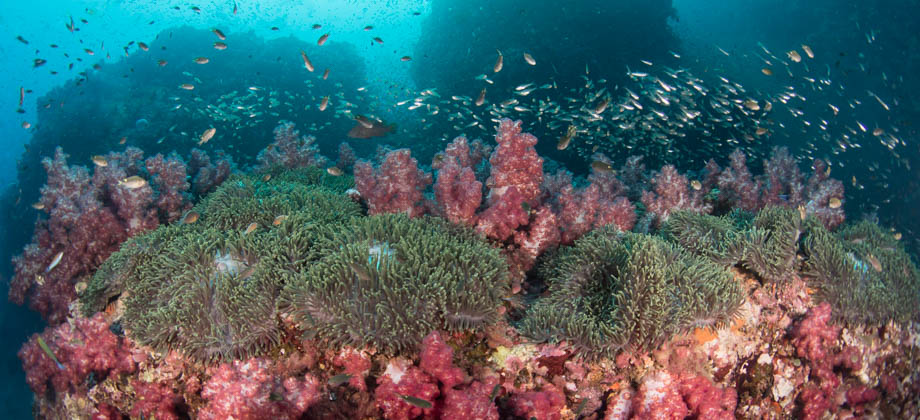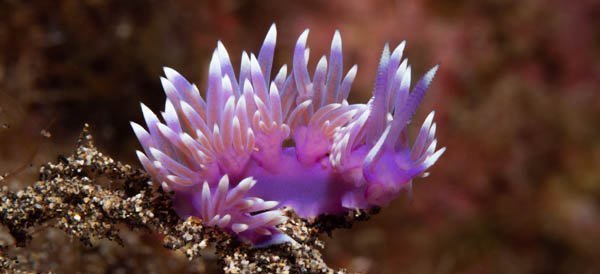Hunting Schools
Large hunting trains of predators can often be found in the waters that surround the northern islands. Most of these consist of trevallies like the apex predator, the giant trevally
(Caranx ignobilis), the bluefin trevally
(Caranx melampygus), and the golden trevally
(Gnathanodon speciosus). The trains trail off into the blue, and individuals within them swoop out suddenly to snatch their prey out of the tight baitballs that swirl around and hug the reef. These hunting trains significantly increase the capture efficiency as they are able to break up the defensive schools of their prey, which helps to isolate individuals.
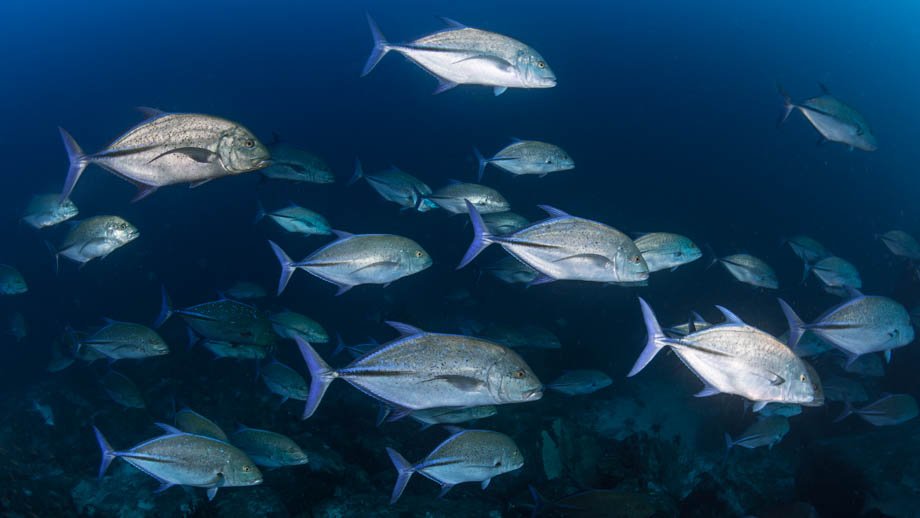 A hunting school of the fast swimming predator, the bluefin trevally (Caranx melampygus)
A hunting school of the fast swimming predator, the bluefin trevally (Caranx melampygus)
Large hunting schools of chevron barracuda
(Sphyraena qenie) can also sometimes be seen here, as well as much smaller schools of the much larger dogtooth tuna
(Gymnosarda unicolor), another apex predator. Longnose emperors
(Lethrinus olivaceus) strike me as the most fascinating predator here, however, as they change their colour from silver to a brown checkered pattern when they begin hunting. If you watch their hunting train long enough, you should be able to spot individuals flashing back to their default silver colour as they drop out of the train to leave the hunt.
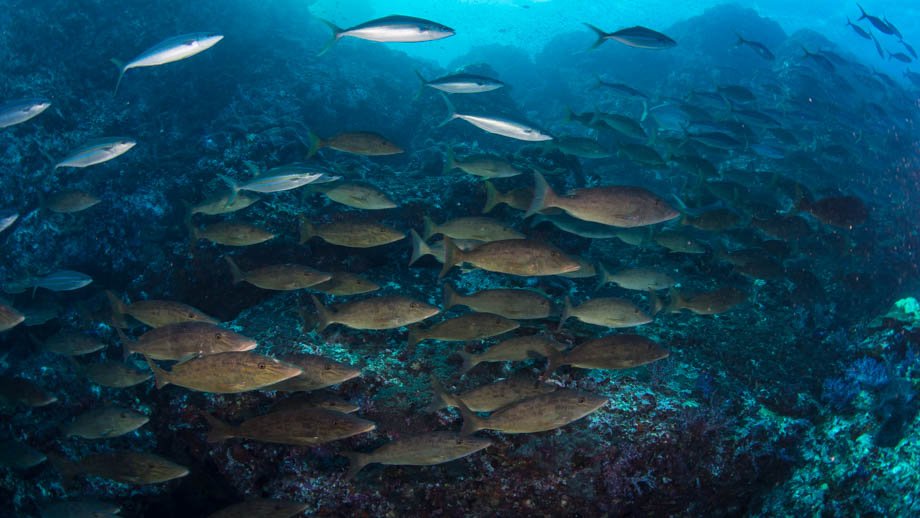 A hunting train of longnose emperors (Lethrinus olivaceus), their distinctive checkered hunting pattern easily seen
A hunting train of longnose emperors (Lethrinus olivaceus), their distinctive checkered hunting pattern easily seen
Colour is also used by schooling or shoaling fish for defensive purposes. A great example of this is the mimic goatfish
(Mulloidichthys mimicus), which has colouration that closely resembles that of the blue-striped snapper
(Lutjanus quinquelineatus). This defensive mimicry not only increases their safety due to the large number of individuals that make up schools of snappers, but also confuses their predators into treating them like a completely different species. Schools of snappers can be very large--bigeye snappers
(Lutjanus lutjanus) for instance, are often seen in schools with congeners
(organisms within the same genus but not necessarily of the same species) that number in the several hundreds. Some snappers, on the other hand, like the checkered snapper
(Lutjanus decussatus), can only be found in small schools.
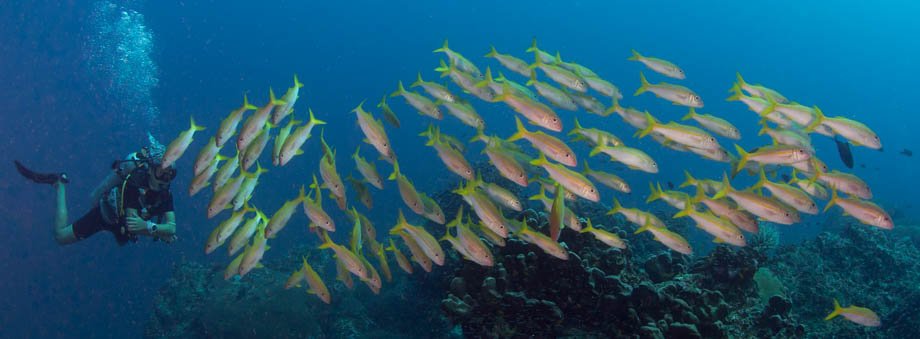
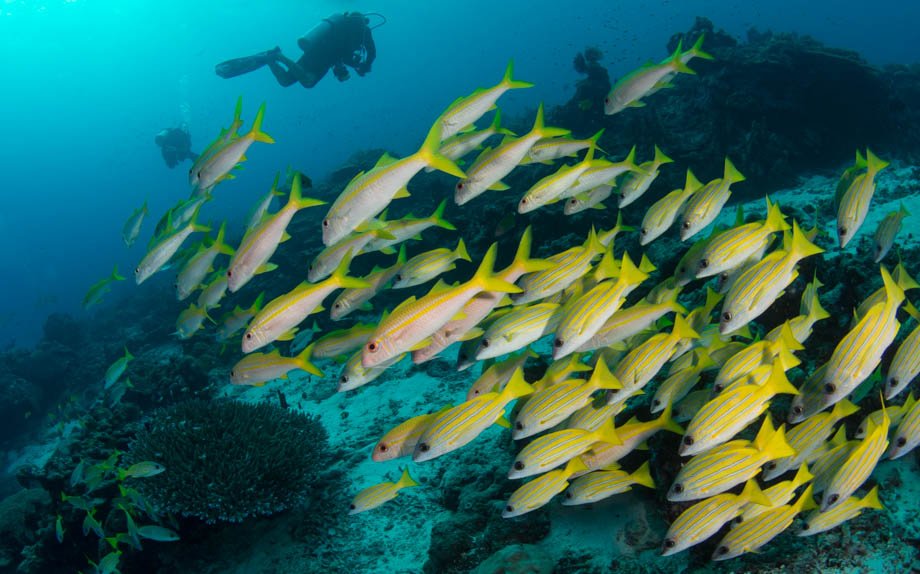 Yellowfin goatfish (Mulloidichthys vanicolensis) can be seen here also schooling with blue-striped snappers (Lutjanus quinquelineatus)
Yellowfin goatfish (Mulloidichthys vanicolensis) can be seen here also schooling with blue-striped snappers (Lutjanus quinquelineatus)
 A school of yellowback fusiliers (Caesio xanthonota)
A school of yellowback fusiliers (Caesio xanthonota)
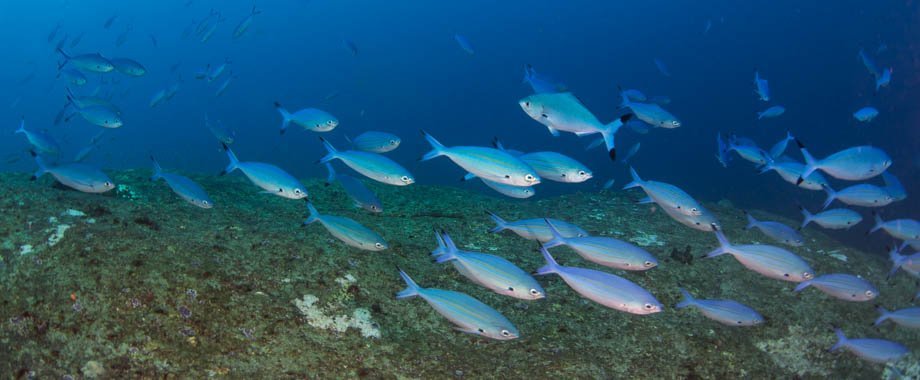 Fusiliers are also often seen in large schools with congeners. Both thin-linedfusiliers (Caesio varilineata) and lunar fusiliers (Caesio lunaris) can be seen here
Fusiliers are also often seen in large schools with congeners. Both thin-linedfusiliers (Caesio varilineata) and lunar fusiliers (Caesio lunaris) can be seen here







